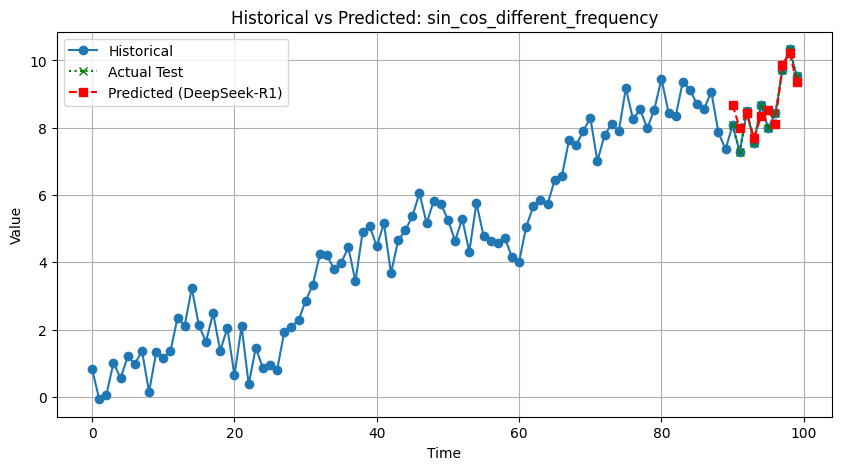Can We Use DeepSeek-R1 for Time-Series Forecasting?
It exceeded my expectations—here's how (+ tutorial with free API!)
Using a language model for time-series forecasting seems counterintuitive.
A paper[1] published a few months ago highlighted the weaknesses of LLM-based forecasting models like Time-LLM.
Soon after, another study[2] showed that these models can significantly improve with the right configurations and tokenization.
There are 2 key issues here:
AI advancements in recent months have been rapid—making it hard to separate hype from real potential.
Not all foundation models are LLMs. For example, TimesFM and MOIRAI are neither LLMs nor LLM-based. (I discussed this in a LinkedIn post and will likely expand on this subject in a future article.
Given the success of reasoning models like DeepSeek-R1, I decided to test whether it can natively extrapolate temporal patterns.
This article covers:
How DeepSeek works and why it outperforms other open-source LLMs.
How to access DeepSeek via a free API.
A mini-benchmark evaluating DeepSeek-R1 on various temporal patterns.
Let’s dive in!
✅ Find the hands-on project for this article in the AI Projects folder (Project 14), along with other cool projects!
Preliminaries
First, we’ll explore DeepSeek and its competitive advantages over other LLMs.


